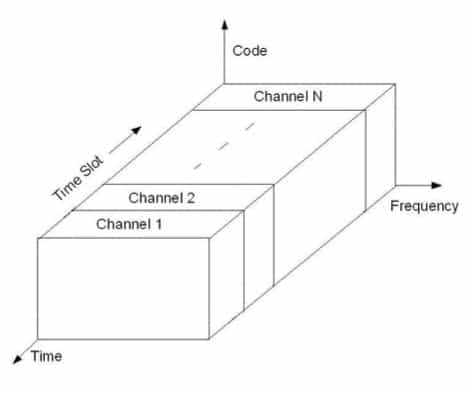|
S.No |
Parameter |
FDMA |
TDMA |
CDMA |
|
1. |
Data Rates |
Low |
Medium |
High |
|
2. |
Mode of Data |
Continuous Signal |
Signal in bursts |
Digital Signal |
|
3. |
Capacity of the system |
Low |
Medium |
Large |
|
4. |
Cost |
High |
Low |
Installation cost is high but operating cost is lowest. |
|
5. |
Handoff |
Hard |
Hard |
Soft |
|
6. |
Flexibility |
Low |
Moderate |
High |
|
7. |
Technique |
Sharing of overall bandwidth of satellite transponder |
Sharing of time of the satellite transponder |
Sharing of bandwidth and time both |
|
8. |
Synchonization |
No synchronization is required. |
Time synchronization is essential. |
No synchronization is required. |
|
9. |
Code Word |
No code word is required. |
No code word is required. |
Code words are required by the ground station. |
|
10. |
Power efficiency |
Power efficiency is reduced. |
Full power efficiency is possible. |
Full power efficiency is possible. |
|
11. |
Guard times and Bands |
Guard Bands are required. |
Guard Times are required. |
Both guard times and bands are required. |
|
12. |
Interference Effects |
Adjacent frequency bands interference generated because of nonlinearity of satellite transponder amplifier. |
Interference between the user of adjacent time slots is generated because of incorrect synchronization. |
Performance is affected because of adjacent time and frequency slots. But effect is less due to frequency hopping. |
|
13. |
Variable Transmission Rate |
Difficult |
Easy |
Easy |
|
14. |
Near-far Problem |
No |
No |
Yes |
|
15. |
Fading Mitigation |
Equalizer not needed |
Equalizer may be needed |
RAKE receiver possible |
PICTORIAL REPRESENTATION:
- FDMA:

- TDMA:

- CDMA:


ye galat hai
Easy and useful information